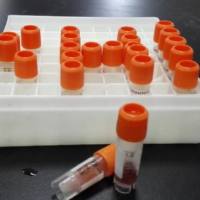FISH Detection on DAPIBanded Chromosomes
互联网
609
Fluorescence in situ hybridization (FISH) techniques are routinely used in physical mapping studies to determine the regional localization of gene and DNA sequences on human metaphase chromosomes (1 ). It is often difficult, however, to precisely position the hybridization signals with respect to the conventional chromosome bands. Various approaches have been introduced, including G banding before or after FISH detection (2 , 3 ), cohybridization with Alu or L 1 probes to generate R or G bands (4 ), use of a combination of various fluorescent dyes, such as quinacrine, Hoechst 33258, or DAPI, with FISH detecting reagents (5 , 6 ), and triple staining with chromomycin, distamycin A, and DAPI (7 , 8 ). Unfortunately, these procedures are not widely used because they are time-consuming and require extensive imaging equipment or careful quality control to be reproducible.








